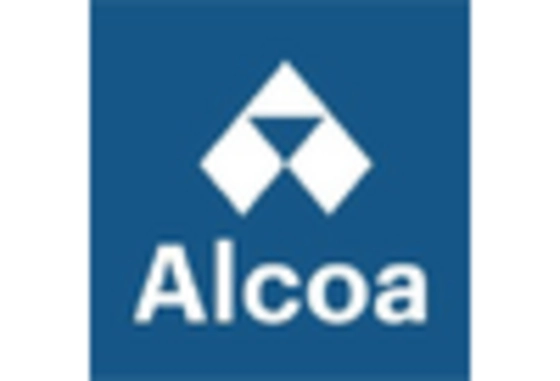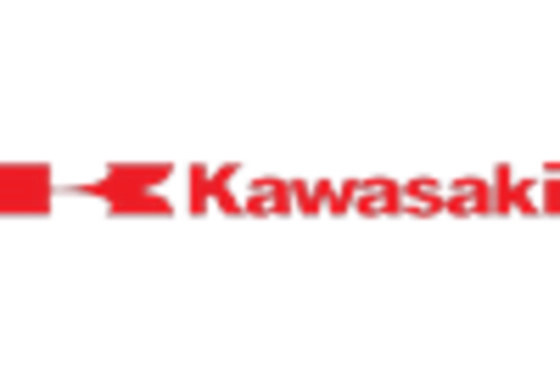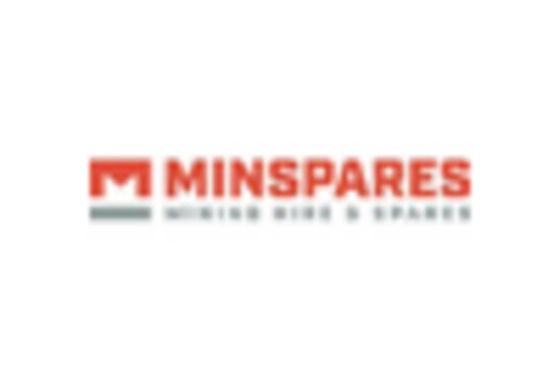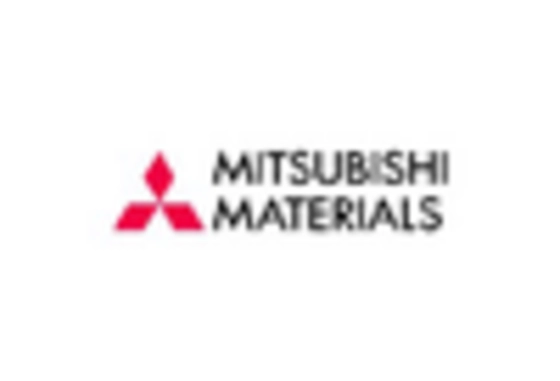Growing Applications in Healthcare
The healthcare sector is emerging as a significant market for aluminosilicates, driven by their unique properties and versatility. Aluminosilicates are utilized in various applications, including drug delivery systems and medical devices, due to their biocompatibility and stability. The increasing focus on advanced healthcare solutions and personalized medicine is likely to propel the demand for innovative materials in this field. Recent market analyses indicate that the healthcare industry is projected to expand rapidly, with a growing emphasis on research and development. This trend presents a promising opportunity for the Aluminosilicate Market, as manufacturers explore new applications and formulations to meet the evolving needs of healthcare providers and patients.
Advancements in Construction Materials
The construction industry is undergoing a transformation, with advancements in materials technology driving the demand for innovative solutions. The Aluminosilicate Market is benefiting from this trend, as aluminosilicates are increasingly used in high-performance concrete and insulation materials. These materials offer superior thermal and mechanical properties, making them ideal for modern construction projects that prioritize energy efficiency and sustainability. Recent data suggests that the construction sector is expected to grow steadily, with a focus on green building practices. This growth is likely to enhance the demand for aluminosilicates, as builders and architects seek materials that meet stringent environmental standards while ensuring structural integrity.
Rising Demand for Lightweight Materials
The increasing demand for lightweight materials across various industries is a pivotal driver for the Aluminosilicate Market. Lightweight materials are essential in sectors such as automotive and aerospace, where fuel efficiency and performance are paramount. Aluminosilicates, known for their low density and high strength, are increasingly being utilized in manufacturing components that require both durability and reduced weight. According to recent data, the automotive sector is projected to grow significantly, with lightweight materials expected to account for a substantial portion of new vehicle designs. This trend indicates a robust growth trajectory for the Aluminosilicate Market, as manufacturers seek to innovate and meet the evolving demands of consumers and regulatory standards.
Increased Investment in Renewable Energy
The growing investment in renewable energy sources is a significant driver for the Aluminosilicate Market. As nations strive to transition towards sustainable energy solutions, materials that can withstand high temperatures and corrosive environments are in high demand. Aluminosilicates are particularly suited for applications in solar panels and wind turbines, where durability and efficiency are critical. Recent reports indicate that investments in renewable energy are expected to reach trillions of dollars over the next decade, creating a substantial market opportunity for aluminosilicate manufacturers. This trend not only supports the growth of the Aluminosilicate Market but also aligns with global sustainability goals.
Expansion in Electronics and Semiconductor Applications
The rapid expansion of the electronics and semiconductor industries serves as a crucial driver for the Aluminosilicate Market. Aluminosilicates are utilized in various electronic applications, including insulators and substrates, due to their excellent thermal stability and electrical properties. The Aluminosilicate Market has been experiencing a surge, with projections indicating a compound annual growth rate of over 10% in the coming years. This growth is likely to enhance the demand for high-performance materials, including aluminosilicates, as manufacturers strive to produce smaller, more efficient electronic devices. Consequently, the Aluminosilicate Market is poised to benefit from this technological advancement and increased production capacity.


















Leave a Comment